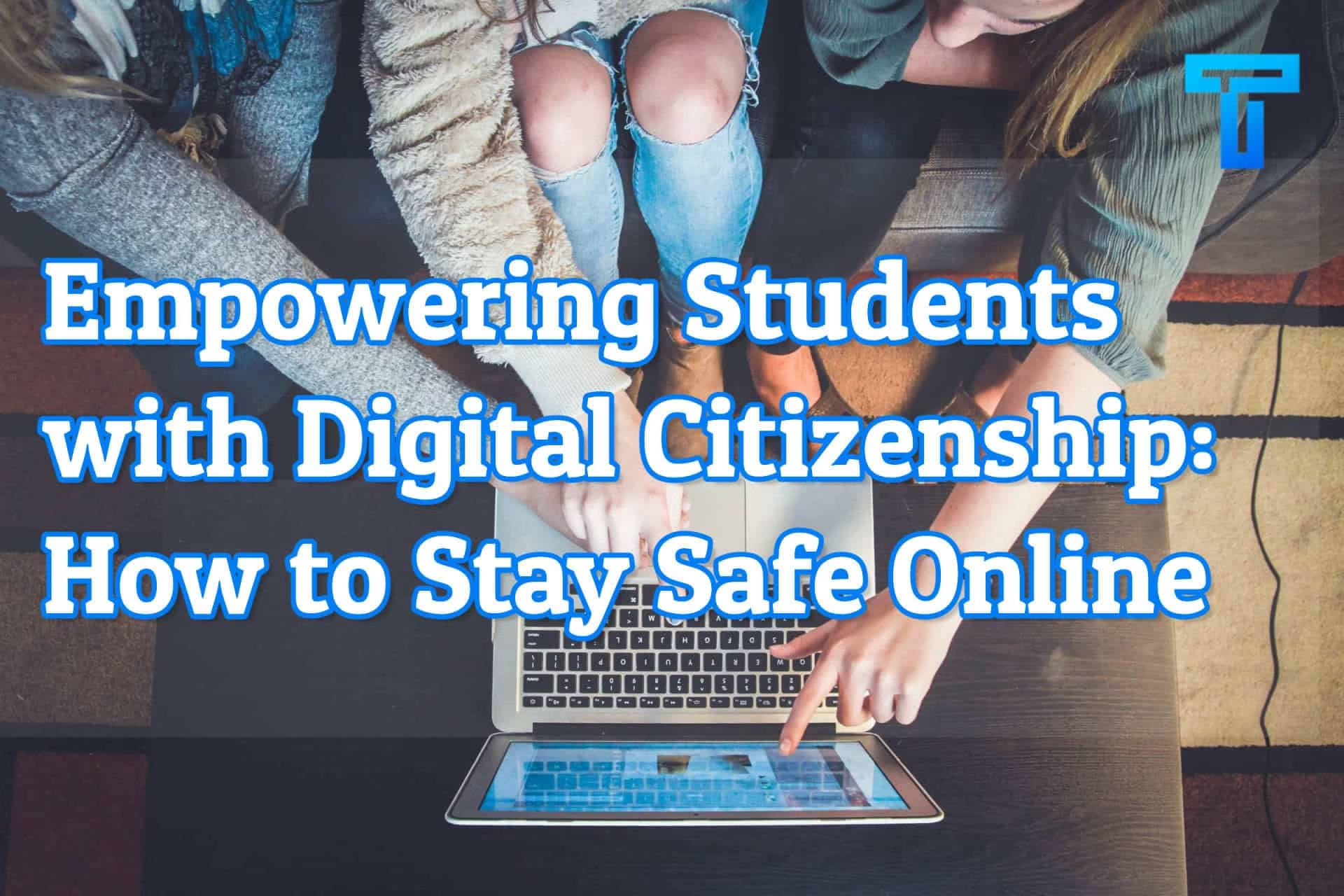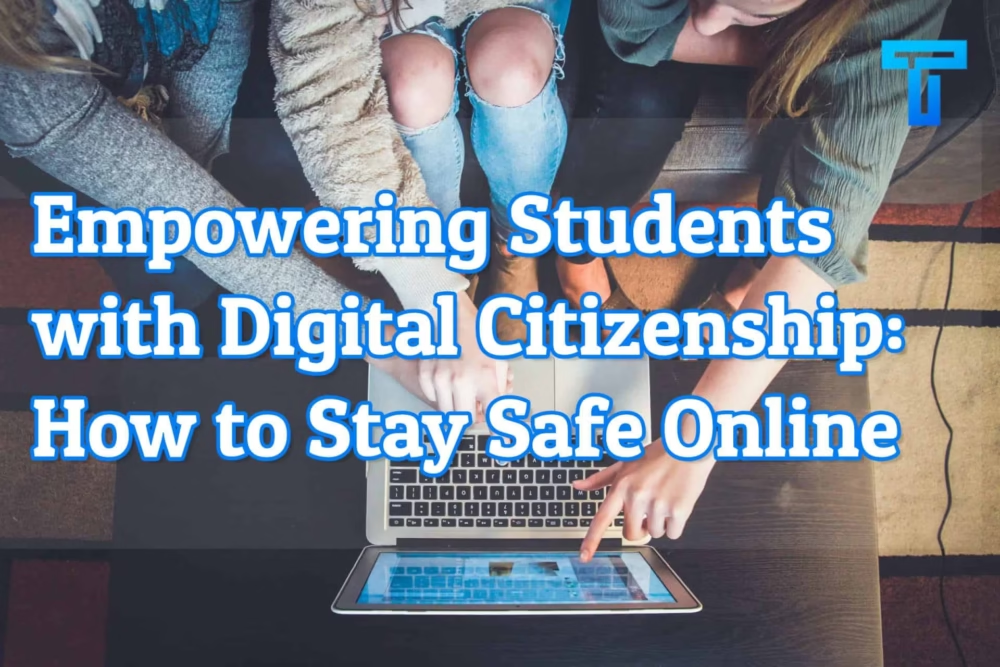
The impact of technology is evident in how people live, work, and learn. Consequently, the integration of people’s online and offline worlds is becoming increasingly seamless.
This implies that modern students are better positioned to connect with others, be creative, be proactive, and contribute positively to society.

On the other hand, individuals’ challenges, freedoms, and obligations are evolving as the world becomes more digital. Therefore, educating students on digital citizenship and internet safety is crucial.
Below, an expert essay helper from a top academic writing service for college students explains digital citizenship and everything you need to know about it.
What does it mean to be a digital citizen?
Digital citizenship refers to the capacity to use technology responsibly and effectively, which includes the individual’s ability to:
- communicate and create content online;
- engage in social activities that respect human rights;
- be aware of the potential risks and benefits of technology;
- use technology in a way that promotes positive outcomes.
Lastly, digital citizenship involves being a respectful and proactive member of society both online and offline.
Why is digital citizenship important?
The use of technology among children is increasing. According to a study conducted in 2021, teenagers spend approximately 8 hours daily using electronic devices.
Students need to know not only how to use a reliable essay writing service like essayservice.com to deal with their assignments but also how to:
- safeguard personal data when using the internet;
- maintain balance and control over one’s internet usage;
- communicate with other users in a kind and respectful manner;
- take a stand against cyberbullying if they witness it happening;
- manage your digital footprint with care;
- show respect for copywriting and intellectual property.
They should also make wise online choices and avoid cyberbullying, reckless social media behavior, and fraudulent schemes.
5 strategies for promoting digital citizenship in the classroom
Incorporating digital citizenship education is crucial for promoting student well-being in the digital era.
- Discuss scenarios and real-life situations
Merely giving talks to students on dos and don’ts is insufficient for digital citizenship conversations to make a significant impact. Delivering messages as simple assertions or advice can make them appear abstract or less significant.
Reading or watching a story about real people can have a much better impact than just hearing facts and stats. Moreover, hearing someone’s story in person can be even more impactful and transformative than reading about it. Simply put, narratives are more likely to remain in our recollection and create a long-lasting impression.
Narrating stories, scenarios, and actual events involving digital dilemmas is an excellent way to teach students online safety. Reflecting on issues can help them relate and share their experiences.
Online platforms offer various types of content, such as videos or written scenarios, for users to access. These prompts are suitable for initiating discussions, eliciting responses, encouraging reflections, or facilitating role plays.
- Stress the importance of digital maintenance
The digital world’s equivalent of a spelling list or cursive practice is digital maintenance. Teaching may not be glamorous, but it is essential for students to learn.
Guide students on:
- How to transfer or save Google Drive files to a separate external drive.
- How to backup important emails, drive files, smartphone photos, apps, and other important data at least once a month.
- Ensure that parents have access to account passwords in case of emergencies. It is recommended to write down the accounts and passwords on a piece of paper and store it in an envelope in a secure and easily accessible location.
- Log out of your accounts instead of just closing the browser window.
- Involve families
Studies have shown that when families are involved in their child’s education, it boosts the likelihood of the child’s academic achievement. Education on digital citizenship is similar to other forms of education. So, it is crucial to involve parents.
Ultimately, it is vital for the community to come together to provide digital citizenship education. Having multiple trusted adults to discuss issues with and getting the same information reinforced from home and school can increase its impact on students. A holistic approach can be created to ensure that every student feels supported and involved.
- Teach students to protect their privacy
Many websites request an excessive amount of personal information. Students need to understand how to safeguard their personal information online and the significance of doing so before sharing it.
Assist your students in comprehending which pieces of information they should keep confidential, including;
- their residence;
- the school they attend;
- their personal email address;
- their phone number.
It is also important to educate students who often enlist the best assignment writing services to deal with their homework on how to review and adjust their apps and social media account settings. Additionally, they should establish personal boundaries for online activity. Do your students know about changing their Instagram account settings to ’Private’ to restrict the visibility of their posted pictures to only people they know?
Understanding the types of information that can be shared and those that should be kept private can enhance your students’ online and offline safety.
- Start early
Digital responsibility should be taught by all educators, not just middle school teachers. Every individual should take responsibility, starting with educating kindergartners. Creating a digital media scope and sequence that outlines the topics and skills that should be taught at each grade level is recommended.
Conclusion
Teaching digital safety is a collaborative effort that involves educators, students, and parents. Educators should consider joining forces with colleagues who teach the same grade level to educate students on being safe digital citizens.